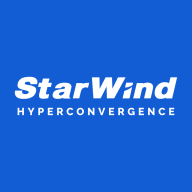


Red Hat Ceph Storage and StarWind HyperConverged Appliance are competing in the data storage and management category. StarWind seems to have the upper hand with its efficient storage management, ease of operation, and superior deployment model.
Features: Red Hat Ceph Storage provides integration with OpenStack services, high availability, and a single solution for managing the entire infrastructure. StarWind HyperConverged Appliance offers high availability in a small setup, ease of management through a single console, and flexibility to deploy without specific hardware requirements.
Room for Improvement: Red Hat Ceph Storage could enhance its deployment ease, reduce initial setup complexity, and streamline customer support responsiveness. StarWind HyperConverged Appliance might benefit from improving its integration capabilities with diverse platforms, expanding its feature flexibility beyond existing hardware, and refining its support documentation for broader audiences.
Ease of Deployment and Customer Service: Red Hat Ceph Storage provides comprehensive documentation and training resources for deployment but may be seen as requiring more effort in initial setup. StarWind HyperConverged Appliance focuses on a streamlined process, offering personalized customer support which enhances the user experience throughout deployment.
Pricing and ROI: Red Hat Ceph Storage, while having a higher initial cost, offers substantial ROI through long-term scalability. StarWind HyperConverged Appliance is noted for its cost-effectiveness, providing a fast ROI due to relatively lower setup costs and immediate operational efficiency.



FlashBlade is the industry’s most advanced scale-out storage for unstructured data, powered by a modern, massively parallel architecture to consolidate complex data silos (like backup appliances and data lakes) and accelerate tomorrow’s discoveries and insights.
For SMB, ROBO and Enterprises, who look to bring in quick deployment and operation simplicity to virtualization workloads and reduce related expenses, our solution is StarWind HyperConverged Appliance (HCA). It unifies commodity servers, disks and flash, hypervisor of choice, StarWind Virtual SAN, Microsoft Storage Spaces Direct or VMware Virtual SAN and associated software into a single manageable layer. The HCA supports scale-up by adding disks and flash, and scale-out by adding extra nodes.
StarWind HyperConverged Appliance consists of StarWind Virtual SAN, Microsoft Storage Spaces Direct or VMware Virtual SAN “Ready Nodes”, targeting those, who are building their virtualization infrastructure from scratch. In case there is an existing set of servers, we offer a “software only version”, which is essentially our years proven StarWind Virtual SAN. Basically, it’s the fuel powering StarWind HCA.
We monitor all Software Defined Storage (SDS) reviews to prevent fraudulent reviews and keep review quality high. We do not post reviews by company employees or direct competitors. We validate each review for authenticity via cross-reference with LinkedIn, and personal follow-up with the reviewer when necessary.